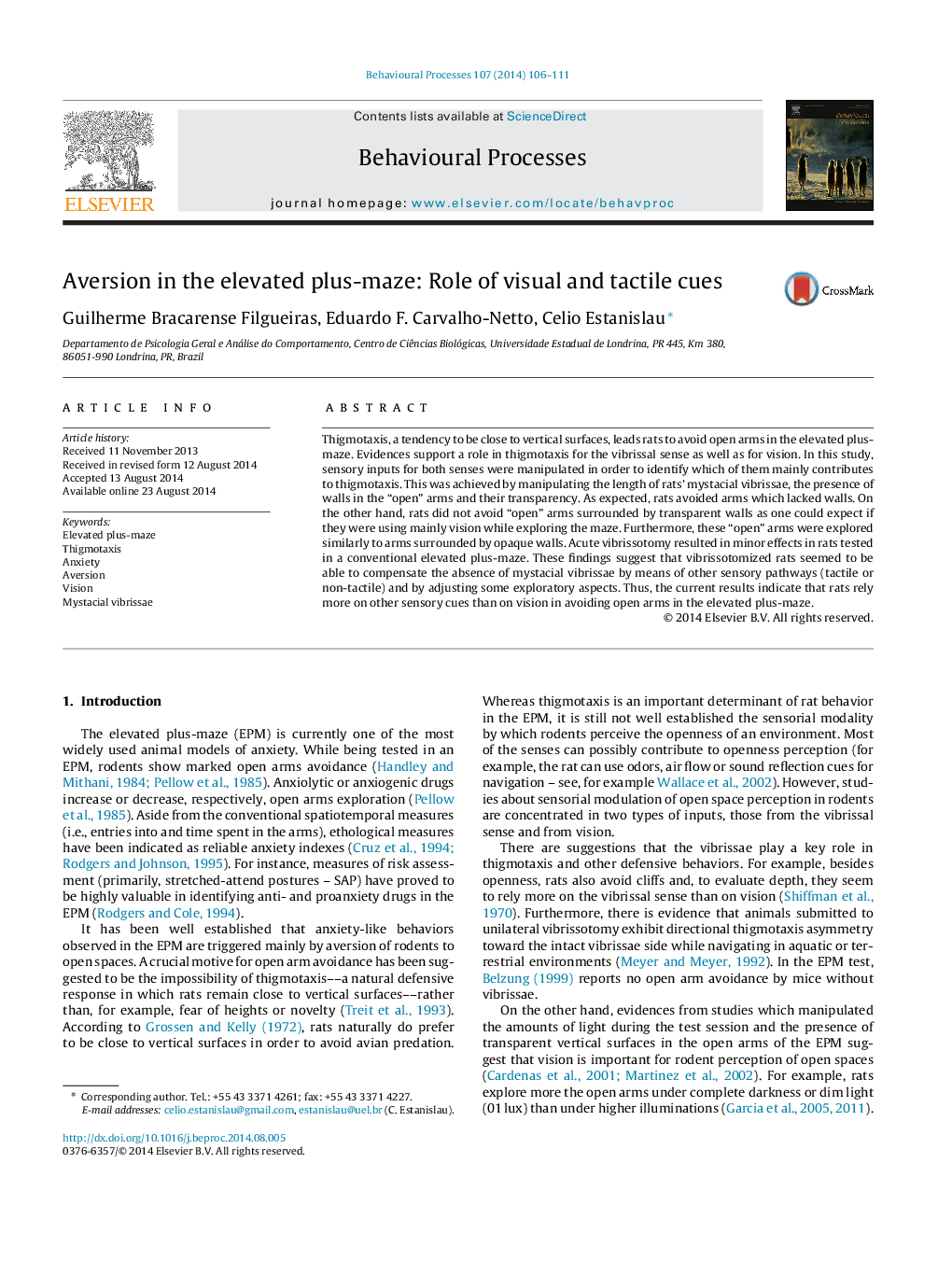| Article ID | Journal | Published Year | Pages | File Type |
|---|---|---|---|---|
| 8497249 | Behavioural Processes | 2014 | 6 Pages |
Abstract
Thigmotaxis, a tendency to be close to vertical surfaces, leads rats to avoid open arms in the elevated plus-maze. Evidences support a role in thigmotaxis for the vibrissal sense as well as for vision. In this study, sensory inputs for both senses were manipulated in order to identify which of them mainly contributes to thigmotaxis. This was achieved by manipulating the length of rats' mystacial vibrissae, the presence of walls in the “open” arms and their transparency. As expected, rats avoided arms which lacked walls. On the other hand, rats did not avoid “open” arms surrounded by transparent walls as one could expect if they were using mainly vision while exploring the maze. Furthermore, these “open” arms were explored similarly to arms surrounded by opaque walls. Acute vibrissotomy resulted in minor effects in rats tested in a conventional elevated plus-maze. These findings suggest that vibrissotomized rats seemed to be able to compensate the absence of mystacial vibrissae by means of other sensory pathways (tactile or non-tactile) and by adjusting some exploratory aspects. Thus, the current results indicate that rats rely more on other sensory cues than on vision in avoiding open arms in the elevated plus-maze.
Related Topics
Life Sciences
Agricultural and Biological Sciences
Animal Science and Zoology
Authors
Guilherme Bracarense Filgueiras, Eduardo F. Carvalho-Netto, Celio Estanislau,
